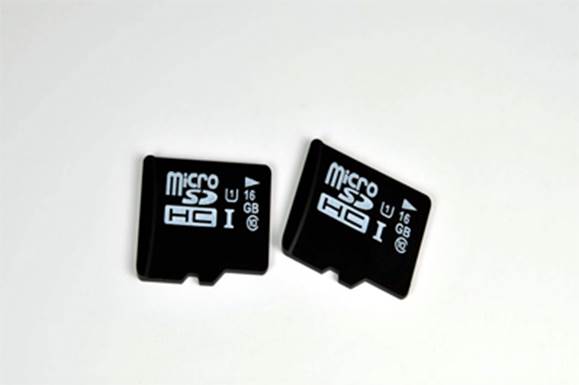You can see the results of our tests in the
graphs below. As we’d expect, continuous shooting performance was blazingly
fast for the first few seconds of the test while the camera was able to make
use of its buffer. Once the buffer filled up, the differing speeds of the
various cards came into play. The shooting rate fell into a slower rhythm (with
the odd hiccup), giving a clear indication of each card’s true data-writing
performance.

Continuous shooting, JPEG mode
It’s immediately obvious that our two
top-end SD cards outshone the rest by far. In our JPEG test, once the camera’s
buffer was full, class 4 cards dawdled for more than a second between shots –
while the 64GB Kingston 233X and the SanDisk Extreme 45MB/sec each kept
snapping away at more than three shots per second. Clearly, the faster cards
offer you a much better chance of capturing the perfect moment,
With these installed, the camera was able
to completely empty its buffer, so it was ready to start shooting again only
six seconds after we took our were much slower: the class 4 SanDisk card took
25 seconds to catch up. Copying the shots off the card was faster too. There
isn’t a perfect correlation between write and read speeds, but by using a USB 3
SD card reader, we were able to copy files from the Kingston 233X card at an
average of 70MB/sec, while other cards offered less than a third of that read
speed.

Continuous shooting, raw mode
We saw similar results in raw mode – but
the sheer volume of data caused even the faster cards to feel sluggish. The
fast Kingston and SanDisk cards achieved only 1.25 raw shots between three and
five seconds to capture each image.
Worth the price?
Our test camera had a large enough buffer
to capture around 20 JPEGs or ten raw files at every high frame rates before
the speed of the memory card became an issue.
If you use your camera mostly for stills
and portraits, which you can shoot at a leisurely pace, it’s worth
experimenting to see how many shots its internal buffer can handle. You may
find your camera provides all the headroom you need, in which case there’s no
point shelling out for a fast SD card.
If you’re likely to spend more time taking
photos of wildfire or sporting events, however, our results show that a
high-speed card will help you to squeeze in more shots per second, giving you a
better chance of capturing the perfect moment.
After all, having spent hundreds or even
thousands of dollars on a DSLR, it makes little sense to baulk at paying over
$100 for a memory card that enables you to get the best out of your hardware.
While not specifically SD card related, a
final point to take away from our testing is that our results neatly illustrate
the benefit than raw, for continuous shooting.
Although shooting in this mode captures
less fine tonal details, this is more than offset by the ability to fire off a
sustained string of shots at three or even four times the rate available in raw
mode.
SDs for tablets and smartphones

Many tablets and smartphones feature a
microSD slot, enabling you to expand the internal storage – perhaps to
accommodate a personal media library, or simply to download and install more
apps.
In this case, there’s often no need to
splash out on fast media. A regular class 4 or 6 card that’s capable of
recording HD video will also be fast enough to play it back. The only advantage
of a faster card for media is that syncing with your PC will be quicker. If you
frequently transfer big movie files or folders full of music back and forth, an
upgrade could be well worth the price.
It’s a similar story when it comes to apps.
A fast microSD card will make games and utilities load more quickly, but in
many cases the difference won’t be noticeable. Of the top ten Android apps in the
Google Play store, the largest is Disney’s Where’s My Water, weighing in at
48MB (most are much smaller). Even the slowest SD card in our tests would be
able to load this entire game into memory in around three seconds. Unless apps
grow considerably in size in the near future, there isn’t much need for
superfast media.
There’s one specific scenario in which we’d
recommend if you’re using an SD card to expend the storage of an Ultrabook or
Macbook Air. SD flash memory is a fraction of the speed of conventional hard
disks and SSDs, so if you try to use a slow card for general-purpose data
storage, you’re likely to find the experience infuriatingly sluggish.